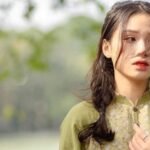
Heart Valve Surgery: Valve Repair and Replacement, Types and Costs
The heart has a total of 4 valves, and the heart valves are like valves that control the one-way flow of blood in the heart. If the valve does not close tightly, it may cause blood to flow backwards, causing blood clots and other complications.
Generally speaking, rheumatic fever and congenital heart defects are the main causes of valvular heart disease. Patients may have valve insufficiency due to lack of leaflets, valve prolapse, or calcification. Causes aortic stenosis (Aortic stenosis), etc.
Usually in areas with backward medical care, rheumatic fever is the main cause of valvular heart disease, especially mitral stenosis or mitral regurgitation, while in medically developed countries, valve degeneration and calcification are the major causes. , especially aortic stenosis, aortic regurgitation or mitral valve insufficiency.
Depending on the patient’s valve condition, the doctor will choose valve repair or replacement surgery to improve the valve problem.
Valve repair
When the valve can be repaired, doctors usually try to keep the patient’s own valve, because replacing an artificial valve is not only expensive, but also less durable than the original valve. If you choose a mechanical valve, you will face thrombosis problems, and you must take antibiotics regularly. Blood clotting drugs.
There are many ways to repair the valve, depending on the problem with the valve. These include filling the hole, separating the leaflets that are glued together, removing some tissue so that the valve can open and close fully normally, sewing the bottom of the valve, or adding an annulus to increase the size of the valve. Stability and more.
Valve replacement
If the patient’s valve is determined to be irreparable, doctors will consider replacing the patient’s own heart valve with an artificial valve. In terms of the choice of artificial valves, there are mainly two types:
- Mechanical valve:
The earliest artificial valve, made of metal, ceramic or plastic. Its advantages are long service life and low cost, but the use of mechanical valves requires lifelong use of anticoagulants to reduce the generation of blood clots and avoid thrombosis, so it is more suitable for young people with a longer life expectancy. Patients with atrial fibrillation who should take long-term anticoagulants are just suitable for mechanical valves and use anticoagulants at the same time. - Biological valves:
Most are made from cow or pig tissue. They are easier for the human body to adapt to than mechanical valves, so they are less likely to produce blood clots. Of course, it would be better to accept human heart valve transplants, but the vast majority are still based on animal tissue products. Biological valves are expensive and less durable, but have a lower chance of thrombosis. They are suitable for the elderly or patients with other serious diseases, and users only need to take anticoagulants for a short period of about 3 months after surgery. In addition, It is also suitable for people who are planning to become pregnant, because taking anticoagulants can have adverse effects on pregnancy and the fetus.

Types of heart valve surgery
In valve surgery repair, traditional surgery and minimally invasive surgery are the more common treatment methods. However, heart valves can actually be replaced through catheters, or specific repair methods can be performed. The following is an introduction to various types of heart valve surgeries.
1.Traditional surgery
Traditional surgery is also called open heart surgery (thoracotomy). After the patient is under general anesthesia, a sternum saw is used to cut the patient’s sternum. When the heart stops, the patient’s heart is stopped. After the extracorporeal circulation machine is connected, the patient’s heart is stopped and a sternum saw is used to cut the patient’s sternum. , and then repair the problematic valve,
Patients who undergo open-heart surgery experience longer recovery times, larger scars, and a higher risk of infection. For example, patients with osteoporosis or diabetes may face difficulties in bone healing after surgery. Therefore, for middle-aged and elderly patients or those who want to reduce the impact of surgery on their appearance, minimally invasive surgery or catheter surgery may be a more suitable method.
2.Minimally invasive surgery
As the name suggests, minimally invasive surgery refers to a surgical method that is less invasive to the body. In minimally invasive surgery, there is no need to saw the sternum open, and a smaller wound is used to enter the heart from the side of the chest and between the ribs.
This method can significantly reduce the possible postoperative pain and infection problems caused by sternum incision, and also allows patients to wear low-cut clothes more comfortably. However, the patient will still have obvious scars on his side chest. It is generally suitable for mitral and tricuspid valve repairs and aortic valve replacement. However, with the advancement of technology, endoscopic surgery and the Da Vinci arm have made minimally invasive surgery more sophisticated.
3.Image-assisted thoracoscopic surgery
Video-assisted thoracoscopic surgery is called Video-assisted thoracoscopic surgery in English, or VATS for short. Through one or several small openings of several centimeters on the side of the chest, surgical instruments and photography lenses are inserted into the patient’s body. The doctor can see the images inside the body through the monitoring screen, while his hands are inserted outside the patient’s body to control the insertion into the patient’s body. surgical instruments.
This method allows doctors to perform surgery to repair or replace the valve without sawing into the patient’s sternum or ribs or using spreaders to enlarge the wound. Early thoracoscopic surgeries only had 2D images, which made it difficult to grasp the sense of space. Recently, 3D imaging technology has become available, allowing doctors to be more intuitive during operations.

4.Da Vinci (robotic arm)
Only four to six small holes of 8 to 12 mm are needed, which means there is enough space for surgery. The doctor will be on the operating table nearby, controlling the instruments and camera lenses required for the use of the robotic arm. The benefit of Da Vinci surgery is not only that the surgical wound is smaller, but also that it can reduce fatigue caused by long-term precision surgery, leading to hand tremors, and reduce the chance of errors.

5.Catheter surgery
Catheter surgery is actually similar to the concept of “cardiac catheterization” that we are familiar with. A catheter equipped with a camera is inserted into the patient’s groin, arm or other places for examination, or equipment such as balloons, stents, and valve clamps are carried to treat valve or blood vessel problems. .
In heart valve repair and replacement, there are mainly the following types of catheter surgeries:
- Balloon dilatation
Balloon angioplasty has a wide range of applications. In addition to being widely used in the surgical treatment of coronary artery stenosis, it also has an immediate improvement effect on valve stenosis. The operation method is the same as that of a cardiac catheter. By inserting the catheter into the blood vessel, along the blood vessel to the target valve, and allowing the balloon to expand and open the narrowed valve, the balloon dilatation procedure is completed.
However, unlike blood vessels, valves can be opened and used with stents to prevent further narrowing. There is still a chance that the patient’s valve will narrow again in the future. - Transcatheter aortic valve replacement surgery
Transcatheter aortic valve implantation, abbreviated as TAVI or TAVR (Transcatheter aortic valve replacement). This surgery is a fairly common ductal valve surgery. Initially used for patients with symptomatic severe aortic stenosis, it can be used as an alternative to traditional surgical aortic valve replacement (Surgical aortic valve replacement, SAVR).
There has been a recent trend of this procedure being extended to younger, lower-risk patients. The doctor will evaluate the appropriate opening for the patient (usually from the femoral artery) to insert the catheter, and let the catheter carry the balloon and the new artificial valve to the position of the aortic valve. After the balloon is inflated, the original aortic valve will be replaced. It is flattened and then replaced with a new artificial valve to complete the operation.
In addition, this valve replacement surgery is also suitable for mitral valve (Transcatheter mitral valve replacement, TMVR) tricuspid valve replacement. - Transcatheter mitral valve reflux repair
The problem of valvular atresia causing blood reflux often comes from valve prolapse, which leaves a gap for blood to flow back when it closes.
In this operation, a catheter is passed through a blood vessel to the valve to be repaired, and then a “valve clamp” is used to clamp the prolapsed end of the valve to prevent blood from flowing back. Theoretically, valve clamps should also be used to treat tricuspid regurgitation, but currently mitral valve clamps are still the mainstream treatment.













